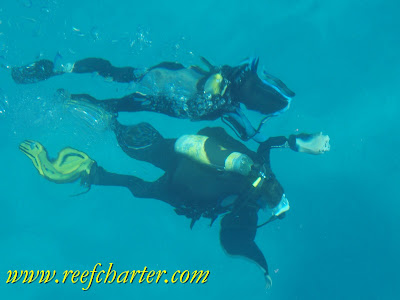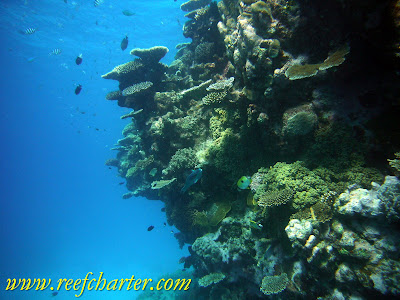We want you to have the best experience and most relaxed vacation as you travel to Australia. So please heed the mistakes of others and make your trip the best it can be.
Over the last few weeks we have had quite a few people miss out on the trip they wanted because they delayed in booking. They made the mistake of thinking they may get some some last minute deal. If there is no room there is no room. You don’t just show up to the airport on your date of travel expecting to get the flight and seat you want. So why go to the destination of your holiday without plans. It is great to be flexible and allow yourself to experience the native flavor.
However you can avoid getting a second class trip or having to settle for tours that are leftovers by booking the key events of your trip. Leave some time for spontaneity but plan the main points of your trip before hand it saves a lot of time and stress. Instead of sitting in a booking office shouldn’t you be walking on a beach or enjoying your holiday. So book early, relax, have fun, and we hope to see you in the coming months.
Author: TonyB
Scuba Dive, Me? No Way!
We hear this everyday as we meet guests on the boat, and they quickly change their mind after seeing the beautiful world below. Well how do I get to experience this? I don’t have the time or never done anything like it before. The easiest and safest way is known as a resort dive, introductory dive or discover dive. This enables you to experience the joys of diving with a short briefing beforehand and then an experienced dive instructor dives with you. On our reef trips we limit the number of introductory divers to two for each instructor. That means they are in direct contact with you during the dive, there to answer any concerns and help you if you have any issues at all. You are limited to a maximum depth of 12 metres (39ft) and a lot of the time you will be shallower.
So what do I need to do to get started? First of all, there is no one forcing you to try to dive so you have to want to do it yourself. Listen to guides, remember to breathe and most of all relax and have a great time! You will be required to fill out a Medical Questionnaire onboard. Certain conditions automatically preclude people from participating in an Introductory Dive, without getting a Dive Medical Exam and getting a “Fit to Dive” Certificate from an Australian doctor (or one who conforms to the Australian Standard AS4005.1 Compliance). One common condition, among others, is asthma. Click here for more information and/or please ask us if you have any questions or concerns.
Almost without exception as the new diver surfaces they let out expressions of joy. Countless testimonies from our guests count it as one of the best things they have ever done. With a little bit of faith and willingness to have a try you’ll be soon floating around coral walls like the one below. You won’t get a certificate to dive after doing an introductory but more then likely will catch the bug and be wanting to do it again and again. The best part after trying to dive with us you can proudly tell everyone for the rest of your life, “I scuba dived on the Great Barrier Reef.”
Discount Flights USA to Cairns & the Reef
Qantas is taking advantage of some of the incentives offered by the government and again offering some cheap flights to Cairns and the Great Barrier Reef. Here are some samples of the deals on offer. So come on down and say G’day as well as get to see the Great Barrier Reef and world class tropical rainforests for some memories you’ll never forget. For this great offer, start your travel between 1 May and 8 June 2010 or between 24 July and 21 September 2010.
Hurry, this sale expires Tuesday, 23 February 2010.
Los Angeles to Cairns round trip from* $ 898
San Francisco to Cairns round trip from* $ 898
New York to Cairns round trip from* $1098
* Taxes, fees and restrictions apply
More details are available on the Qantas website. Make sure when you come to see the iconic Great Barrier Reef you see it in the possible way, so don’t forget to book your snorkel or dive trip here.
Facts About Coral Reefs
Quick and Fast Facts
• The Great Barrier Reef is the largest structure built by living organisms on the Earth today.
• The Great Barrier Reef region is the world’s largest group of coral reefs.
• There are three main types of reefs found on the Great Barrier Reef: Ribbon, Platform, and Fringing reefs.
• Tiny masses of coral polyps are responsible for building coral reefs.
• Coral Reefs make up 6% of the entire Great Barrier Reef Marine Park by Area.
• Reefs are masses of limestone made from skeletons of millions upon millions of tiny marine animals and plants.
• Main threats to coral reefs include human activities, coral bleaching and crown-of-thorn starfish outbreaks.
The Continental Shelf provides the platform from which the reefs of the Great Barrier Reef develop. In the north, the continental shelf lies close to the coast and gradually widens as it extends south.
How Reefs Protect Themselves
Most reefs have a side protected from the prevailing wind and swell. The exposed face of a reef endures the constant battering of powerful waves generated by high winds. Here, corals and coralline algae grow and bind together to form the limestone breakwater of the reef behind which everything else is sheltered. In these sheltered areas, hard corals, soft corals, algae and sponges inter grow to form gardens that are home to thousands of species.
How Coral Reefs Form
Reefs are masses of limestone made from skeletons of millions upon millions of tiny marine animals and plants. Coral polyps, the main reef builders, grow in colonies on a reef’s surface. They extract dissolved limestone from the water and, with the help of single-celled plants (called zooxanthellae) living inside them, they lay it down as hard limestone around the lower half of their bodies. Over time, polyps slowly multiply to create a coral formation, which varies in size and shape depending on where it lives. People refer to these coral formations by their shape or appearance, for example, staghorn, boulder, vase and plate coral. As a coral grows, new polyps replace old polyps. When coral polyps die, their limestone skeletons and the remains of other animals and plants are added to the framework of the Reef.
Threats to Coral Reefs
Coral reefs in the Great Barrier Reef are under pressure due to a number of threats, from both human and natural impacts. Activities such as diving, boating, anchoring and fishing can affect reefs by damaging corals and impacting on other animals and plants.
Coral bleaching is a natural threat to coral reefs. It occurs when corals are over-stressed and can be caused by extreme sea temperatures, high levels of sunlight, low salinity, diseases, pollutants and exposure to air and rain at low tides.
Crown-of-thorns starfish can destroy entire reefs by feeding on coral polyps. Outbreaks occur and reefs are destroyed when the number of crown-of-thorns starfish on a particular reef is high enough that they are able to consume coral polyps faster than corals can grow.
Types Of Reefs
• Fringing reefs are coral structures that are attached to the mainland or to continental islands. In the Great Barrier Reef most fringing reefs are found around islands. Fringing reefs are probably the reef type most commonly seen by visitors.
• Platform reefs are also known as patch reefs and are scattered in the calm, shallow waters between the mainland and edge of the continental shelf. They are usually round or oval patches and often tend to be broken up.
• Ribbon reefs only occur in the northern part of the Great Barrier Reef. They form along the edge of the continental shelf and can grow so high they form narrow walls.


